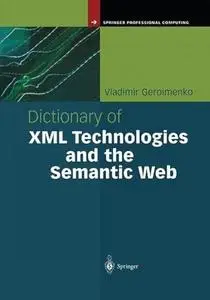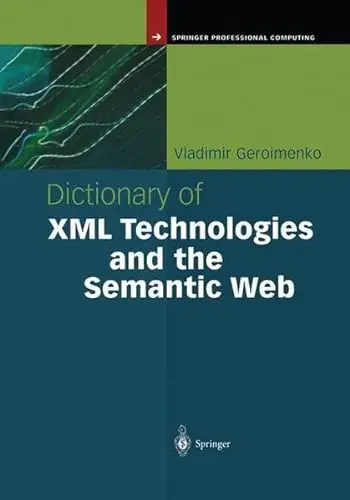Dictionary of XML Technologies and the Semantic Web by Vladimir Geroimenko
English | PDF | 2004 | 241 Pages | ISBN : 1852337680 | 20.1 MB
The emerging Second-Generation Web is based entirely on XML and related technologies. It is intended to result in the creation of the Semantic Web, on which computers will be able to deal with the meaning ("semantics") of Web data and hence to process them in a more effective and autono mous way. This new version of the Web introduces a multitude of novel concepts, terms, and acronyms. Purpose, Scope and Methods This dictionary is an effort to specify the terminological basis of emerging XML and Semantic Web technologies. The ultimate goal of this dictionary is even broader than just to define the meaning of newwords - itaims to develop aproper understandingofthese leading-edge technologies. To achieve this, comprehensible definitions of technical terms are supported by numerous diagrams and code snippets, clearly annotated and explained. The main areas covered in this dictionary are: (1) XML syntax and core technologies, such as Namespaces, Infoset and XML Schema; (2) all the major membersofthe XML family oftechnologies, such as XSLT, XPath and XLink; (3) numerous XML-based domain-specific languages, such as NewsML (News Markup Language); (4) the concept and architecture of the Semantic Web; (5) key Semantic Web technologies,such as RDF (Resource Description Framework), RDF Schema and OWL (Web Ontology Language); and (6) Web services, including WSDL (Web Services Description Lan guage) and SOAP (Simple Object Access Protocol).
Without You And Your Support We Can’t Continue
Thanks For Buying Premium From My Links For Support
Thanks For Buying Premium From My Links For Support



